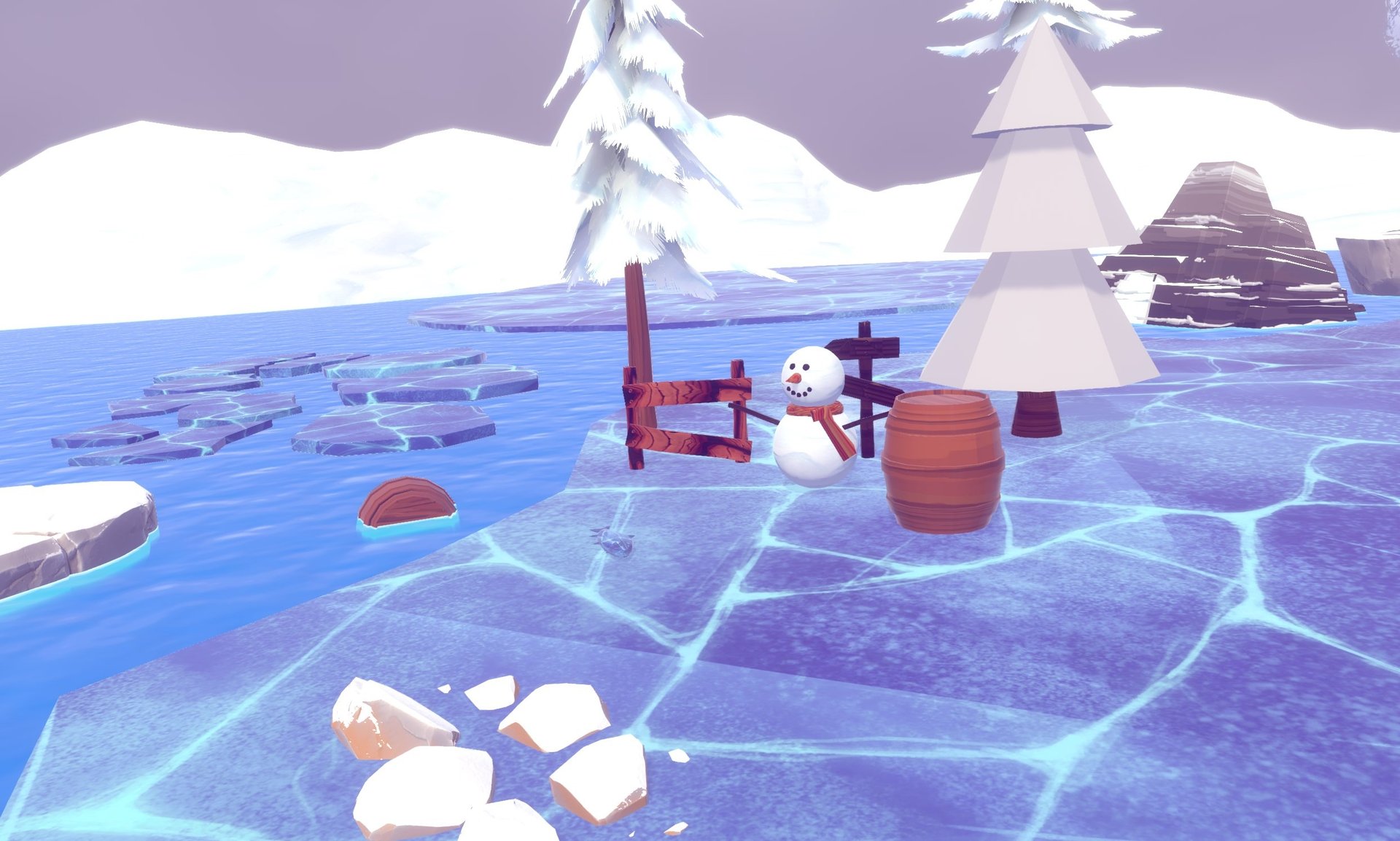
Winter Wars
Interactive tabletop game
Winter Wars is a high-fidelity prototype player versus player arena game designed for an interactive tabletop format. Developed as part of a 3D design course, the game combines elements from arena fighters and battle royale genres, featuring fast-paced snowball battles on a shrinking iceberg. Designed for two to four players gathered physically around the tabletop, each round lasts approximately five minutes, encouraging replayability and social interaction.
As part of the team, I was responsible for 3D modelling of game assets and leading the user research process focused on tangible interaction. My research informed both the physical form and interaction logic to ensure satisfying and responsive gameplay.
This page is divided into three sections, each highlighting areas I worked on and found particularly relevant for my portfolio:
1) Controller development, 2) Usability testing, and 3) gameplay video of the finished game.

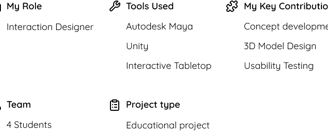
Winter Wars
My projects / Winter Wars
Desk Research
My goal was to identify which types of physical controllers would create the highest levels of engagement, enjoyment and control. The game uses two tangible controllers per player, one for movement and one for aiming, tracked using fiducial markers and a camera system.
As part of the process, we needed to explore how the game could best be controlled using tangible controllers. I started by investigating the physical requirements for fiducials, then created mockups to explore possible design directions for the controllers.
More prototypes
After exploring different ideas for how the game could be controlled, I decided to keep the controllers abstract in form. I chose simple geometric shapes such as a circle, triangle and square, each with added height to make them three-dimensional. I selected abstract shapes deliberately to avoid misleading associations or confusion during gameplay. My goal was to keep the focus on the game itself and ensure that the controllers felt intuitive and easy to use, even without prior instructions. I explored different types of tangible controllers to examine which shape would contribute most to a positive user experience.
The final version of the controllers was 3D printed to give them more structure and durability, and to evaluate which design made the most sense with a usability test. I chose this approach because the focus of the study was on usability rather than on what the controllers might represent.
Year: 2024
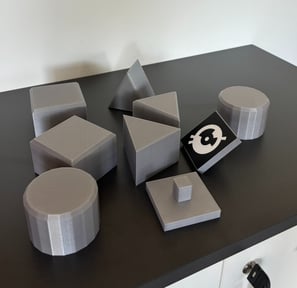

1) Controller development
3) Gameplay video
Thinking Aloud
During the user test, I asked participants to share their thoughts and experiences while testing the three different tangible controllers. I documented their input continuously, as it provided valuable detail for further analysis.
To supplement the think-aloud method, I conducted a follow-up semi-structured interview, which allowed participants to validate and reflect on their in-game statements. The interview provided an opportunity for participants to elaborate and offer deeper insight into their experiences and opinions.
To explore their experience of usability in the tangible controller setup, I used McNamara and Kirakowski’s (2006) three key dimensions of technology use as inspiration: functionality, usability and experience.
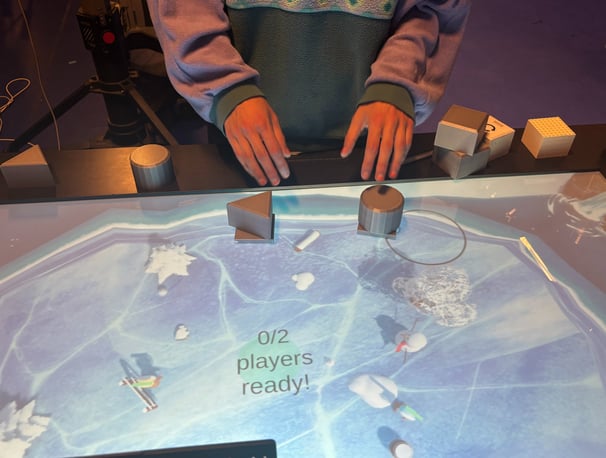

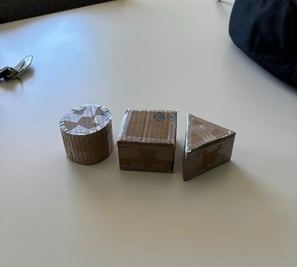

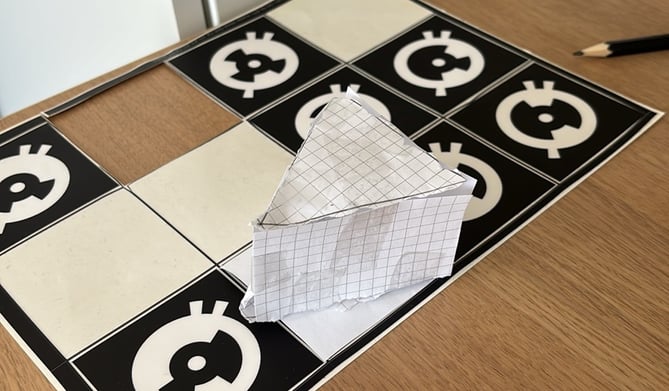

Findings from the usability test
The findings from the user test were:
Comfort: Participants preferred rounded shapes with chamfered edges, which made the controllers more pleasant to hold. The use of 3D-printed material added a tactile structure that contributed to a better grip and feel.
Learning curve: Simplicity in form proved essential. Controllers should not distract from the gameplay, and minimizing friction in interaction helped players stay focused on the game rather than the interface.
Identification: Differentiating the controllers by shape supported intuitive use. Adding subtle labels helped clarify functions, such as aiming direction, without breaking immersion.
Based on these insights, I improved the design by assigning specific shapes to functions for instance, using a round shape for movement and an angular form (such as a hexagon or octagon) for shooting direction. Chamfered edges, 3D-printed material, and subtle visual cues further enhanced usability and player experience.
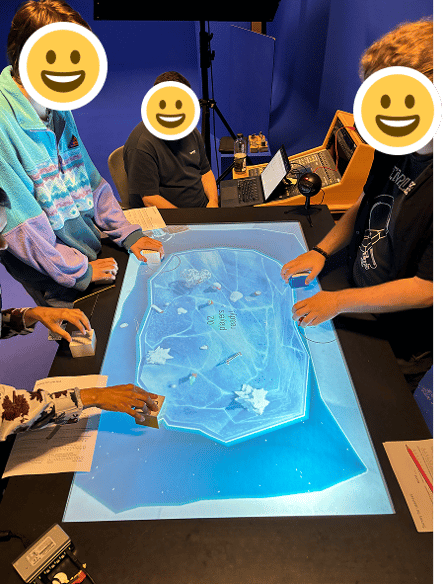

The lag in the recording is due to the recording tool, not the gameplay on the table, which was smooth and responsive.
2) Usability testing

